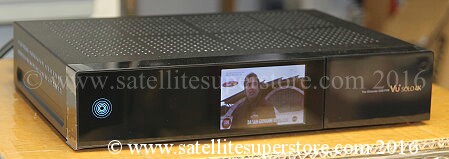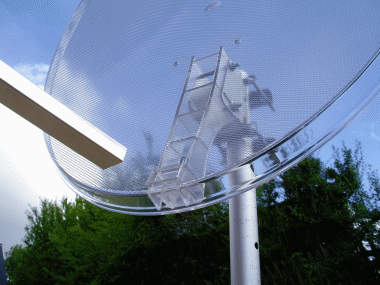This Nov. 1933 issue below of "Popular Wireless" is interesting as it mentions "TELEVISION PROGRESS".
Then if we look below at the Nov. 1934 issue of Popular Wireless, the title now says
Clearly the editor and publishers are now taking television much more seriously.

In 1927 Philo Taylor Farnsworth demonstrates the first electronic television system. It was demonstrated in San Francisco on
7th Sept 1927 and for the first time it employed electronic scanning in both the pickup and display devices. This interesting
article (above) was written by Philo Taylor Farnsworth 1937. He is the Vice President of Farnsworth Television Corporation
1946. Wireless World. July 1946
Television transmissions were stopped when war broke out in 1939 and resumed on the 7th June 1946.
Here below we have a Wireless world magazines from July 1946 showing a BBC television camera.
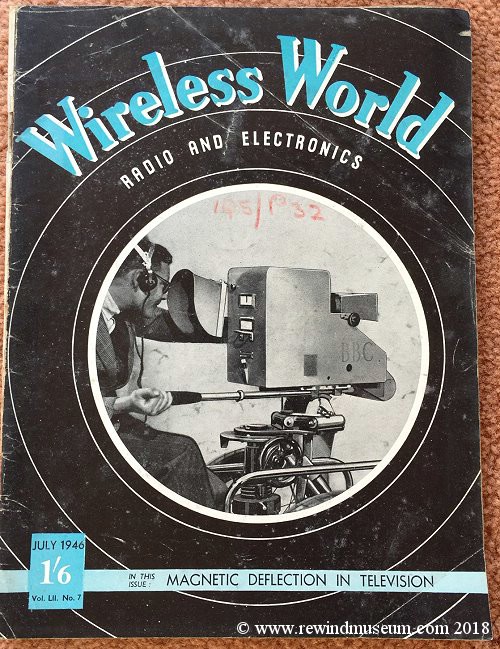
Wireless World. September 1948
There is also an excellent picture of a slightly later BBC camera on the front on this magazine.
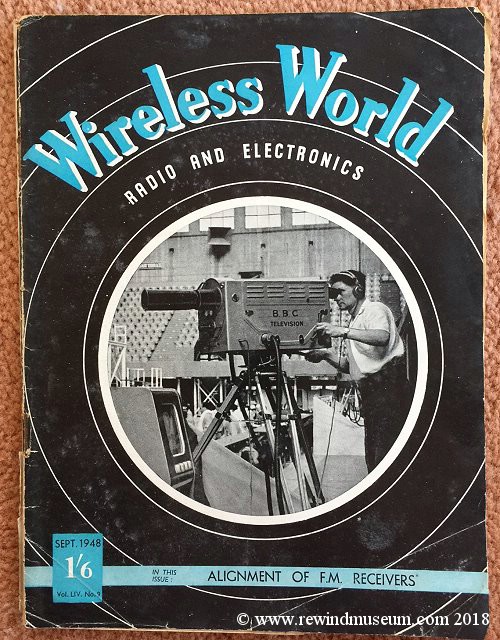

Practical Television magazine. June 1950.

Volume 1. Number 3. Price 9d which was about 4 new pence in the decimal UK currency.
Regular TV broadcasts started in 1936 to the London area but during the war, (1939 - 45) they were
discontinued. In 1946 they restarted and in 1949 the second transmitter was built near Birmingham.
By 1950 there would not have been many TV sets in the country, mainly they would have been located in the London
area receiving TV from Alexandra Palace and with a very small number near Birmingham. Pre-50s televisions are rare.
Some of the features in this June 1950 copy of this magazine were - "Television and the Housewife",
"Scenery for Television" and "Television Puppets".
Editor FJ CAMM. The same editor as
Practical Motorist,
Practical Mechanics and
Practical Householder.
Frederick James Camm was born 6th October 1895 and died on the 18th February 1959.
He was an English technical author and magazine editor for a number of magazines - Practical Engineering -
1st published Jan. 1940, Practical Home Money Maker, Practical Householder, Practical Mechanics -
1st published Oct. 1933 - until Aug. 1963, Practical Motorist - 1st published May 1934, Practical Television -
1st published Sept. 1934 until June 2008, Practical Wireless - 1st published 1932 - still in publication in 2021.
Practical Television magazine. March 1951.

Practical Television magazine. February 1953.

Practical Television magazine. June 1957.

Practical Television magazine. February 1958.

This 1958 issue contains an interesting article about the history of television from 1936 to 1958.


Above and below you can see a reference to - "This Olympia show which opened on August 26th 1936, was the first
opportunity that the public was given to seeing television. The interest shown was unbounded. No fewer than
seven leading radio manufacturers had (TV) receiving sets on show, and the transmissions were seen by 100,000
visitors during the week of the show" - and - "From a purely technical point of view the demonstrations were less
successful as both systems had bad breakdowns." - here the article is referring to broadcasts from
the Baird system and the Marconi-EMI system.



Practical Television magazine. April 1958.

There is a really interesting letter in this April edition of "Practical Television" magazine below.
How things have changed since 1958!

Practical Television magazine. June 1958.

Practical Television magazine. July 1958.
This July 1958 issue of "Practical Television" below shows a very unusual TV from the French company "Teleavia".
The "Teleavia P111" TV was designed by "Flaminio Bertoni".
Flaminio Bertoni was an Italian automobile designer. He designed the Citroën - Traction Avant, 2 CV, DS, H Van and AMI-6
All of these vehicles were designed before this TV in 1958 apart from the AMI-6 which was introduced in 1961.
All of these vehicles had an unusual but now iconic shape compared to other vehicles at the time.

Practical Television magazine. December 1958.

The front of this Practical Television magazine shows a TV which looks very similar (but not identical) to the
Ekcovision Model T164 television which we have in the museum Also notice the excellent front cover graphics
which, in my opinion were better than previous front covers above and better than latter front covers below.
Again
FJ Camm was the editor. Probably one his last magazines as he died in 1959.
There is some interesting advertising from this magazine below.




Practical Television magazine. December 1964.

Practical Television magazine. January 1965.

These days remote controls for televisions are the norm, but not in January 1965.
Here you can build your own remote control. Notice how large it is and with knobs on!
Practical Television magazine. February 1965.

Practical Television magazine. February 1967.
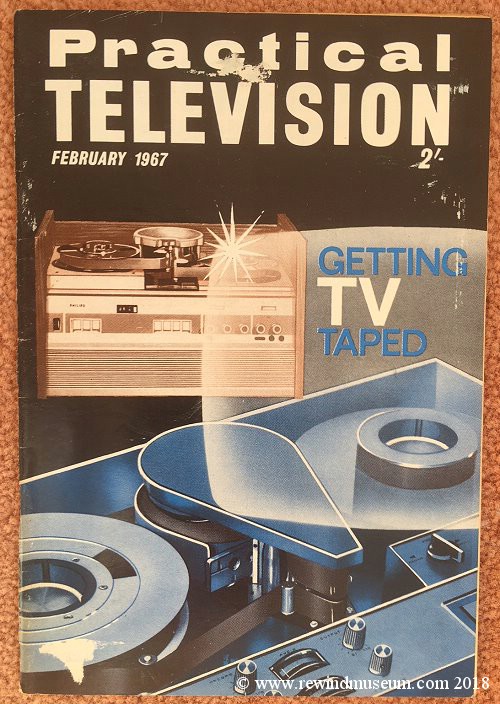
This is a very interesting Practical Television magazine as it includes a feature on "Getting TV Taped".
You can see on the front cover a
Philips EL3400 and also what looks like an Ampex reel to reel similar to the
VR5003.



Practical Television magazine. September 1967.

An excellent picture on the front of production facilities and studio cameras in 1967.
The camera has "Rediffusion" on the side which was the main cable provider in the UK. In those
days only terrestrial content was found on cable as this is 20 years before satellite TV.
Practical Television magazine. February 1969.

This one is of particular interest to me as I bought it in 1969 and kept it (not a donation).

Long Distance Television by Roger Bunney. June 1976.
Roger Bunney wrote this book in 1976 and another "A TV-DXers Handbook" (below) in 1986. He was a writer for "Television"
magazine (formally "Practical Television") from 1970 until 2007 when it folded. See more information about Roger below.



I have known about Roger Bunney for many years. I used to buy "Television" magazine in the 1970s and 80s and would read
his articles. I have been in regular communication with him since 2008. In January 2021 he donated the March 1928 original
copy of "
Television" magazine, Vol. 1, No. 1 to the museum. He is a satellite enthusiast and feed hunter. In 1976 he wrote
the book shown above "Long Distance Television". Before satellite TV, large high gain aerials were used to try and receive
a more distant terrestrial transmitter. The BBC and ITV would have local programs and those programs would be different
from one region to another. Being able to receive more than one transmitter provided a wider range of programs. This
was still a very small, even minute selection compared to the 1000s of channels available these days from satellite
or internet sources. Sometimes rotating motors were used to turn the aerial from one transmitter to another. Indeed
I still have an "Hirschmann" aerial rotator which I used in the 1970s. It was not used for TV reception, it was used
to rotate a large FM aerial. In 1986 Roger wrote another book called "
A TV-DXers Handbook" about terrestrial
and satellite TV and including satellite feed hunting using a satellite system. Both books are in our museum.
Roger Bunney sent me this email in May 2018.
"I started writing for "Television" magazine (formerly "Practical Television") in June 1971 and continued until 2007 when
the magazine folded. (The regular articles were usually called “Long Distance Television” but there were others. Ed)
I wrote monthly articles called "Satellite Search" in "
What Satellite" magazine (which folded in 2014) from 1989 until 2008.
(Note - I also wrote for "What Satellite" magazine from 2008 until 2010.
Click here to read the articles. - ED)
I first met
Steve Birkill going back to about 1965. He then disappeared from DXTV and surfaced again in 1975 with
dramatic pictures of the ATS-6 [SITE] Indian TV satellite experiment from 35e and although miles off boresight it was
possible to receive signals in the UK. Bob Cooper encouraged to go to the States, and leaving his transmitter job at
Holme Moss. Steve returned to the UK forming a research/development company somewhere in Wales. He did much of the
design for Sky receivers." (I spoke to Steve via “Messenger” in 2018. Details on "
The History of Satellite TV" page. Ed)
When I used to read Roger’s articles in "Television" magazine, it was one of his articles in 1987 which led to me
to buy the
Sentra STX600 television. Ed). At the time Roger said "Multistandard including all NTSC variants".
Roger Bunney sent me this email in January 2021.
"My doubtful career having left the furniture trade 1960-mid 63 then went to
DER TV Rentals at Southampton as a
bench engineer but part way through the 18 month employment period I was transferred to the Salisbury branch in
charge of their Wiltshire/N Dorset service area - I was head of myself in effect - and then in Dec. 1964 started
at Southern Television which became TVS. We all were then made redundant in 1992 when Meridian took the
franchise and stopped making local programmes. I then resurfaced after 6 months of gardening into a
Technician Instructor at Solent University covering radio, film and video production techniques and operation."
During all of that time, Roger was a prolific writer on the subject of television reception.
One of his articles from the
September 1982 issue of "Television" magazine is shown below.
Roger Bunney donated this 1928 issue of "Television" magazine Vol. 1 No 1 in January 2021.
Click here to read all about it.
We have dedicated a whole page solely to this magazine on our web site.
Click here to read all about it.
This issue is the first edition of the world's first dedicated television magazine. March 1928.
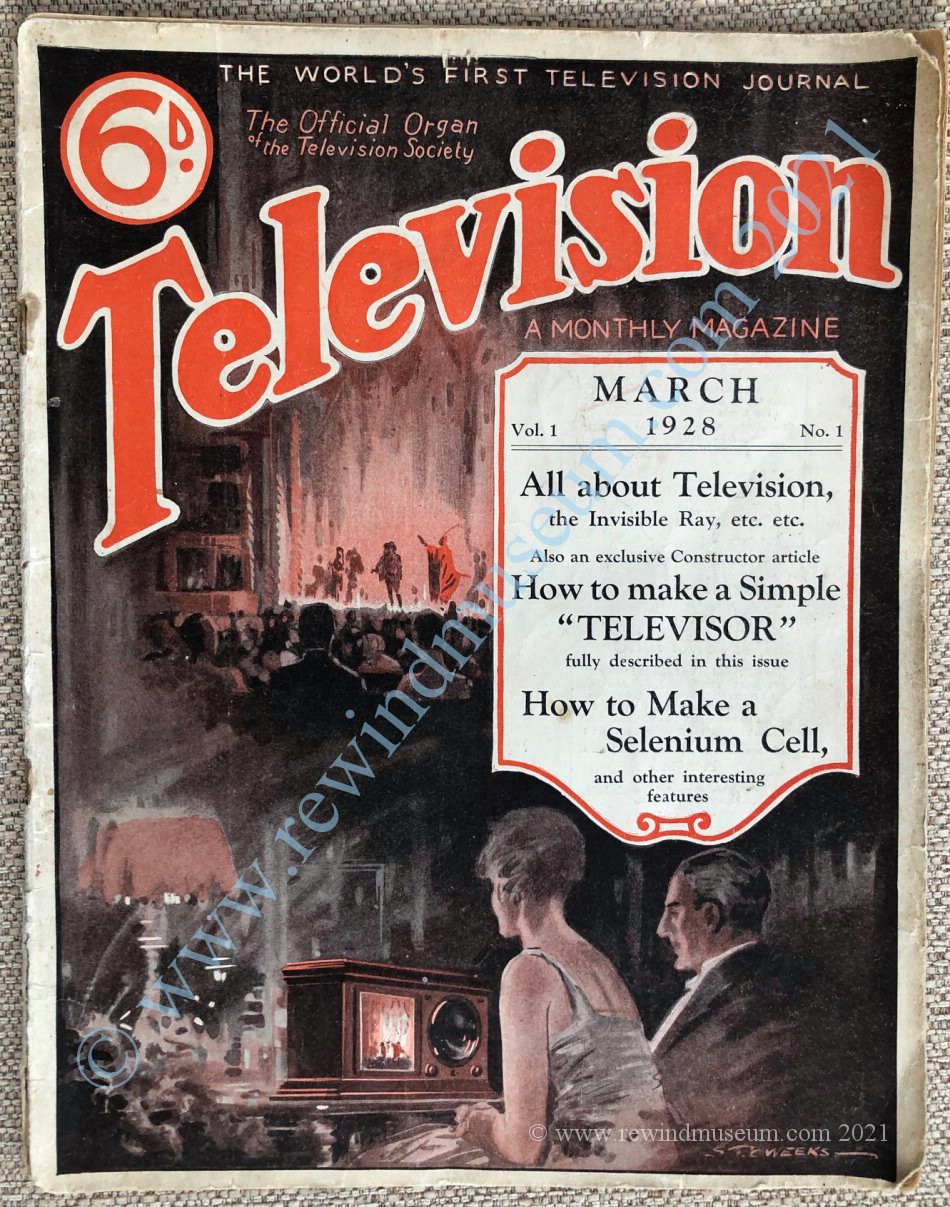

"Television" magazine. October 1975
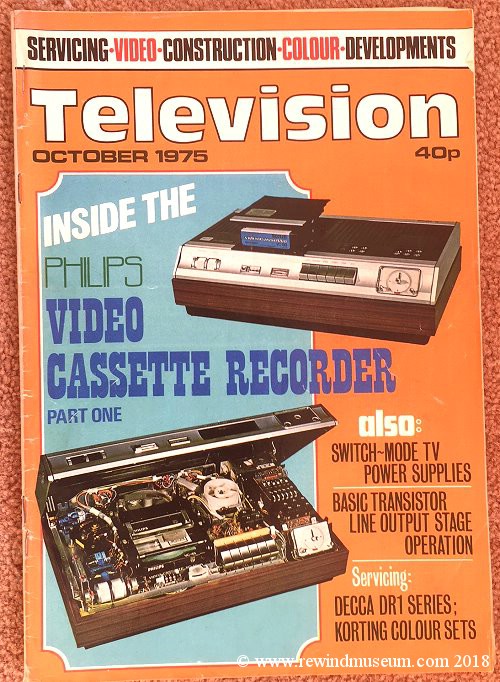
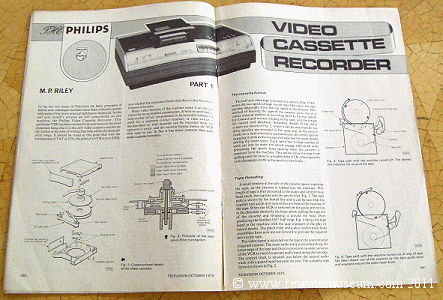
Featuring the Philips N1500 video recorder. The first ever domestic video cassette recorder.
"Television" magazine. November 1975

Television servicing advice.
"Television" magazine. September 1982






It is quite difficult to find good satellite articles before 1985. The two articles above are from the
Sept 1982 issue of Television magazine. The first article details the situation regarding satellite TV
in 1982. The only satellite directing programming to Europe was the OTS satellite (Orbital Test Satellite)
which was launched in 1978 and stated TV transmissions in Oct 1981. One of two channels was called
"The Satellite Channel" and by Sept 82 it had increased it's transmissions from 2 hours a day to 5
hours a day in August only 4 weeks earlier. A September magazine may well have been written in
early in August before the increase to 5 hours.
The following year the channel was bought by News International and in 1984 it became "The Sky Channel".
In 1982 a 3m dish was required to receive The Satellite Channel from the OTS satellite.
A picture with quite a lot of noise was possible on a 1.8m dish. They refer to a "recognisable picture".
I was surprised to see a 2nd satellite article in this magazine and this time written by
Steve Birkill.
Steve is also mentioned in the 1st article above. He suggested a circuit for the "indoor unit" (These days
we might call it a set top box or satellite receiver) in the June 1980 edition of Television magazine.
Below you can see an article written by "
Roger Bunney" in this September 1982 issue of "Television" magazine.




Baird Televisor.
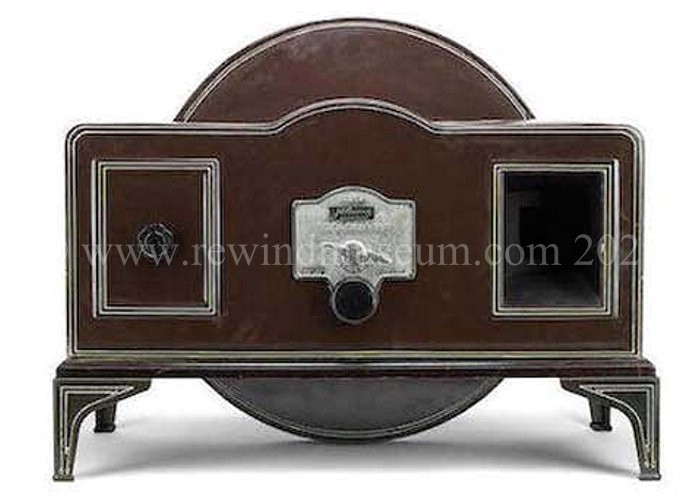
From 1929 the Baird Televisor was manufactured by "Plessey" in England and about 1000 were sold.
The set uses a 30 line scanning disk. It is about 1m wide and 70cm. The image is about the size of a postage stamp.
The first experimental television broadcasts were just 30 lines of television, received by those who owned a ‘Televisor’.
Many Televisors were DIY and constructed from kits. Some
DIY Televisor kits of parts were sold by
Peto-Scott Ltd in 1928.


 Making a donation.
Making a donation.
The Rewind Museum is a non-profit making endeavour. The web site and the touring exhibitions are run on
a voluntary basis. Donations,
not money, just old items you no longer want, are always welcome.
If you have something that you think would be of interest, please contact us with the details.
We can send in a courier to pick them up. (Even an international courier). Thank you.
Please note - The Rewind Museum site has been archived by the British
Library so that future generations can always access the site's content.
To talk to us about making a donation please go to - "
making a donation".
Are you interested to read about a 10 year + restoration of a classic vehicle?
If so go to -
www.1952chevytruck.com
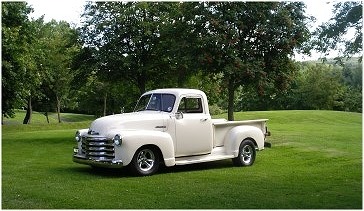 The 1952 The 1952 Chevy truck web site.
The 1952 The 1952 Chevy truck web site.

Web site copyright © 2018 Vision International. All rights reserved.
For all questions & comments about this site's content contact Dave at Rewind Museum.



























































